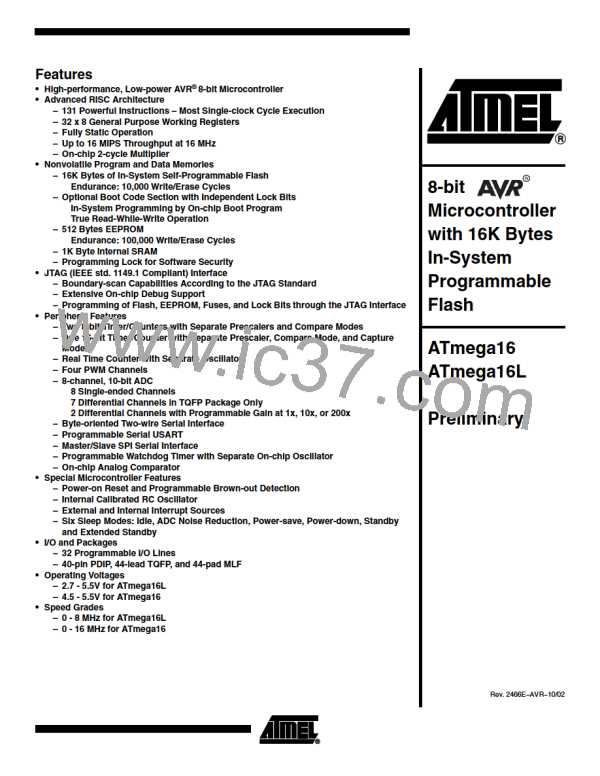Power-on Reset
A Power-on Reset (POR) pulse is generated by an On-chip detection circuit. The detec-
tion level is defined in Table 15. The POR is activated whenever VCC is below the
detection level. The POR circuit can be used to trigger the Start-up Reset, as well as to
detect a failure in supply voltage.
A Power-on Reset (POR) circuit ensures that the device is reset from Power-on. Reach-
ing the Power-on Reset threshold voltage invokes the delay counter, which determines
how long the device is kept in RESET after VCC rise. The RESET signal is activated
again, without any delay, when VCC decreases below the detection level.
Figure 16. MCU Start-up, RESET Tied to VCC
.
VPOT
VCC
VRST
RESET
tTOUT
TIME-OUT
INTERNAL
RESET
Figure 17. MCU Start-up, RESET Extended Externally
VPOT
VCC
VRST
RESET
tTOUT
TIME-OUT
INTERNAL
RESET
External Reset
An External Reset is generated by a low level on the RESET pin. Reset pulses longer
than the minimum pulse width (see Table 15) will generate a reset, even if the clock is
not running. Shorter pulses are not guaranteed to generate a reset. When the applied
signal reaches the Reset Threshold Voltage – VRST – on its positive edge, the delay
counter starts the MCU after the Time-out period tTOUT has expired.
36
ATmega16(L)
2466E–AVR–10/02

 ATMEL [ ATMEL ]
ATMEL [ ATMEL ]